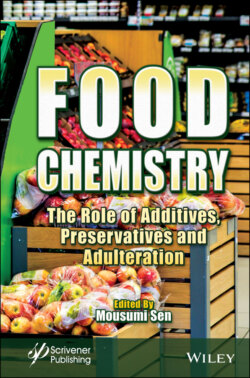Читать книгу Food Chemistry - Группа авторов - Страница 79
2.3.6.5 Fat Replacers
ОглавлениеThere is a growing consciousness developing in world to the ratio of saturated fatty acid to poly- and mono-saturated fatty acids in the diet. It is concluded that calories from fat in the diet should not be more than 30%. There is growing market demand for low fat food that encourage research on low fat content of food. Whenever fat content is reduced, it will automatically affect organoleptic property and physical property of food. To get desirable character, there is a need to use fat replacers. Fat replacers are carbohydrate, protein, and fat-based compound that replace fat to reduce calories in food. They can be synthetic fat substitute, emulsifier, starch derivative, hemicellulose, bulking agent, etc. They can be classified as follows:
a. Fat substitute: It is a synthetic compound that can replace fat on weight by weight basis. These compounds are having similar chemical structure to fat but they are resistant to digestive juices.
b. Fat mimetics: These are the substances that imitate the physical or organoleptic properties. They are also known as “texturizing agent”. They require high amount of water for their action.
c. Fat analogs: These compounds have similar characteristics of fat but digestibility and nutritional value are different.
d. Fat extenders: They allow decrease in the amount of fat in the product [18].
Carbohydrate-based fat replacers are not used for frying purpose. Protein-based fat replacers are made from milk protein or egg protein. They can be heated and be converted to microparticle that give the same mouth feel as fat. They are used in butter, cheese, mayonnaise, and salad dressings. They cannot be used for frying and baking. Fat-based fat replacers are fat molecules that are modified so that they can be partially absorbed.
